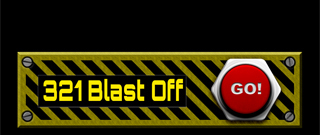321 Blast Off
Learning Objective: Mathematics and Rocketry
Heat Transfer Video
Rocket Laboratory Activity
Greetings parents, teachers and students of Earth. These online STEM activities are programs in development and are offered in the hope we can all work and research together. Please drop us a line if you have any thoughts, ideas and or suggestions. Thank you. Please note these activities are built for WebGL (HTML5). Mobile apps are being developed separately.
Game Play
You are a rocket fuel scientist who must create propellants for future space missions. Geologists have recently discovered three volatile substances that may be suitable for rocket fuel. You must use your rocket laboratory to research and conduct experiments. As a scientist you will be able to prepare rockets for heavy lift, suborbital and low orbit missions. And, because you are an excellent scientist, you will be able to express all of the details of your missions mathematically!
Information for the Parents and Teachers:
321 Blast Off is a mathematical simulation featuring five missions to study the science, technology, engineering and mathematics of basic rocketry.
The flight model is based on thrust, impulse, gravity and drag. The player is given 3 virtual fuel types and an oxidizer to create various propellants to power the test rocket.
‘Propellant = Fuel + Oxidizer’ There is an optimum ‘Fuel to Oxidizer Ratio’ that must be learned through experimentation. This ‘Rating’ is expressed as a value from 0 – 1.
The power of the propellant (measured in Newtons) is calculated using the following formula: Burn Time = Impulse/Thrust * Rating
The dry weight specifications of the test rocket are given. The total weight of the rocket is computed as the rocket is configured for each test flight. A recorder provides post-flight data and graphs the mission.
Standards
Next Generation Science Standards
MS-PS3 Energy Students who demonstrate understanding can:
Construct and interpret graphical displays of data to describe the relationships of kinetic energy to the mass of an object and to the speed of an object
RST.6-8.1 Cite specific textual evidence to support analysis of science and technical texts
RST.6-8.7 Integrate quantitative or technical information expressed in words in a text with a version of that information expressed visually (eg. in a flowchart, diagram, model, graph, or tablet)
Mathematics:
6.RP.A.1 Understand the ratio and use the ratio language to describe a ratio relationship between quantities
6.RP.A.2 Understand the concept of a unit rate a/b associated with a ratio a:b not equal to 0, and use rate language in the context of a ratio relationship
7.RP.A.2 Recognize and represent proportional relationships between quantities





